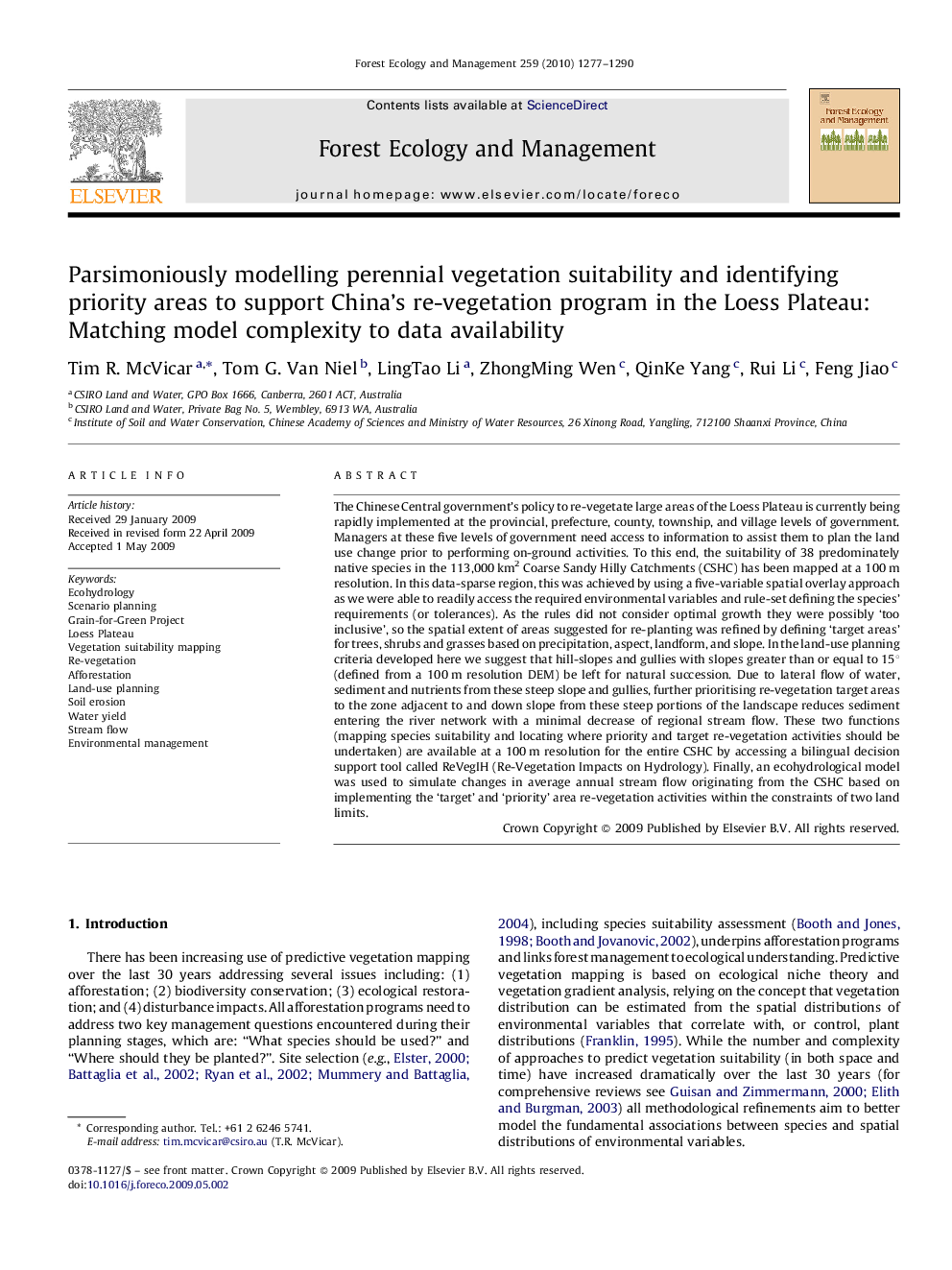| کد مقاله | کد نشریه | سال انتشار | مقاله انگلیسی | نسخه تمام متن |
|---|---|---|---|---|
| 88620 | 159311 | 2010 | 14 صفحه PDF | دانلود رایگان |

The Chinese Central government's policy to re-vegetate large areas of the Loess Plateau is currently being rapidly implemented at the provincial, prefecture, county, township, and village levels of government. Managers at these five levels of government need access to information to assist them to plan the land use change prior to performing on-ground activities. To this end, the suitability of 38 predominately native species in the 113,000 km2 Coarse Sandy Hilly Catchments (CSHC) has been mapped at a 100 m resolution. In this data-sparse region, this was achieved by using a five-variable spatial overlay approach as we were able to readily access the required environmental variables and rule-set defining the species’ requirements (or tolerances). As the rules did not consider optimal growth they were possibly ‘too inclusive’, so the spatial extent of areas suggested for re-planting was refined by defining ‘target areas’ for trees, shrubs and grasses based on precipitation, aspect, landform, and slope. In the land-use planning criteria developed here we suggest that hill-slopes and gullies with slopes greater than or equal to 15° (defined from a 100 m resolution DEM) be left for natural succession. Due to lateral flow of water, sediment and nutrients from these steep slope and gullies, further prioritising re-vegetation target areas to the zone adjacent to and down slope from these steep portions of the landscape reduces sediment entering the river network with a minimal decrease of regional stream flow. These two functions (mapping species suitability and locating where priority and target re-vegetation activities should be undertaken) are available at a 100 m resolution for the entire CSHC by accessing a bilingual decision support tool called ReVegIH (Re-Vegetation Impacts on Hydrology). Finally, an ecohydrological model was used to simulate changes in average annual stream flow originating from the CSHC based on implementing the ‘target’ and ‘priority’ area re-vegetation activities within the constraints of two land limits.
Journal: Forest Ecology and Management - Volume 259, Issue 7, 20 March 2010, Pages 1277–1290